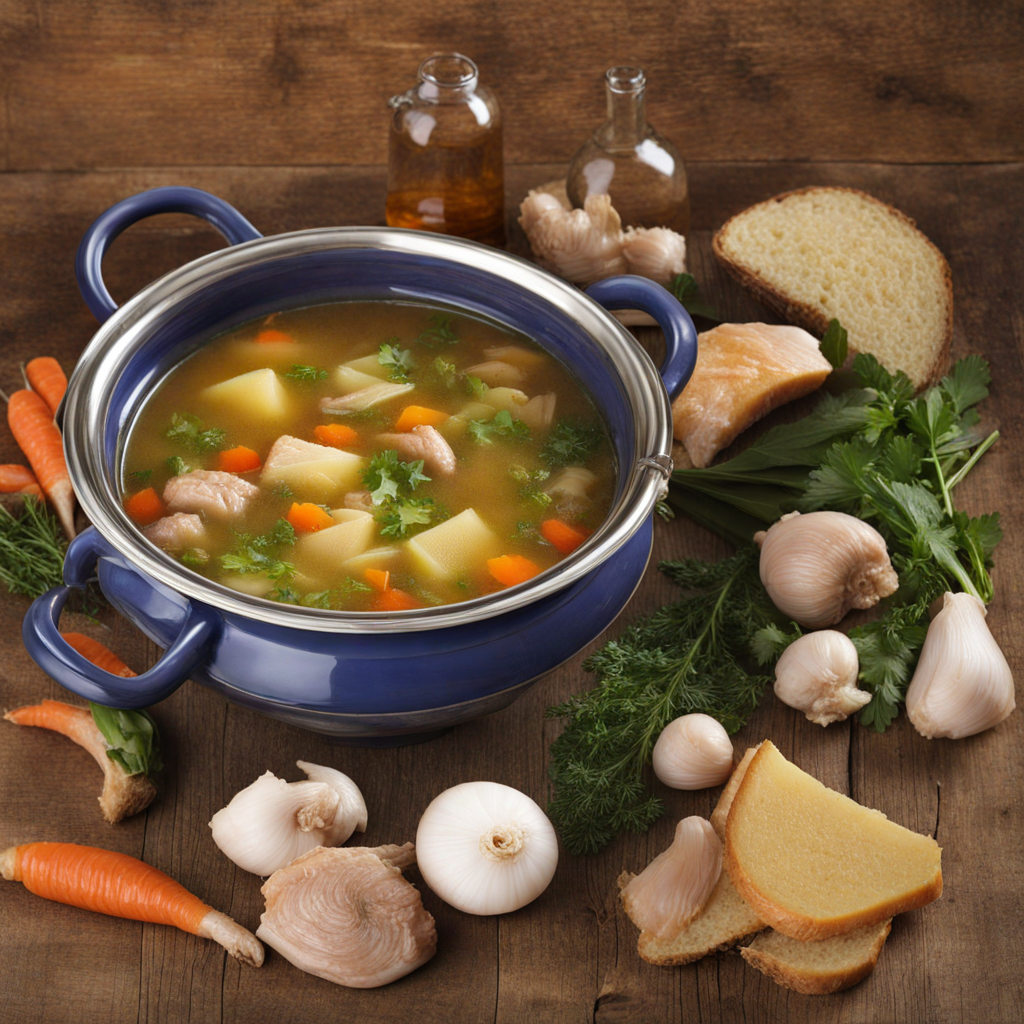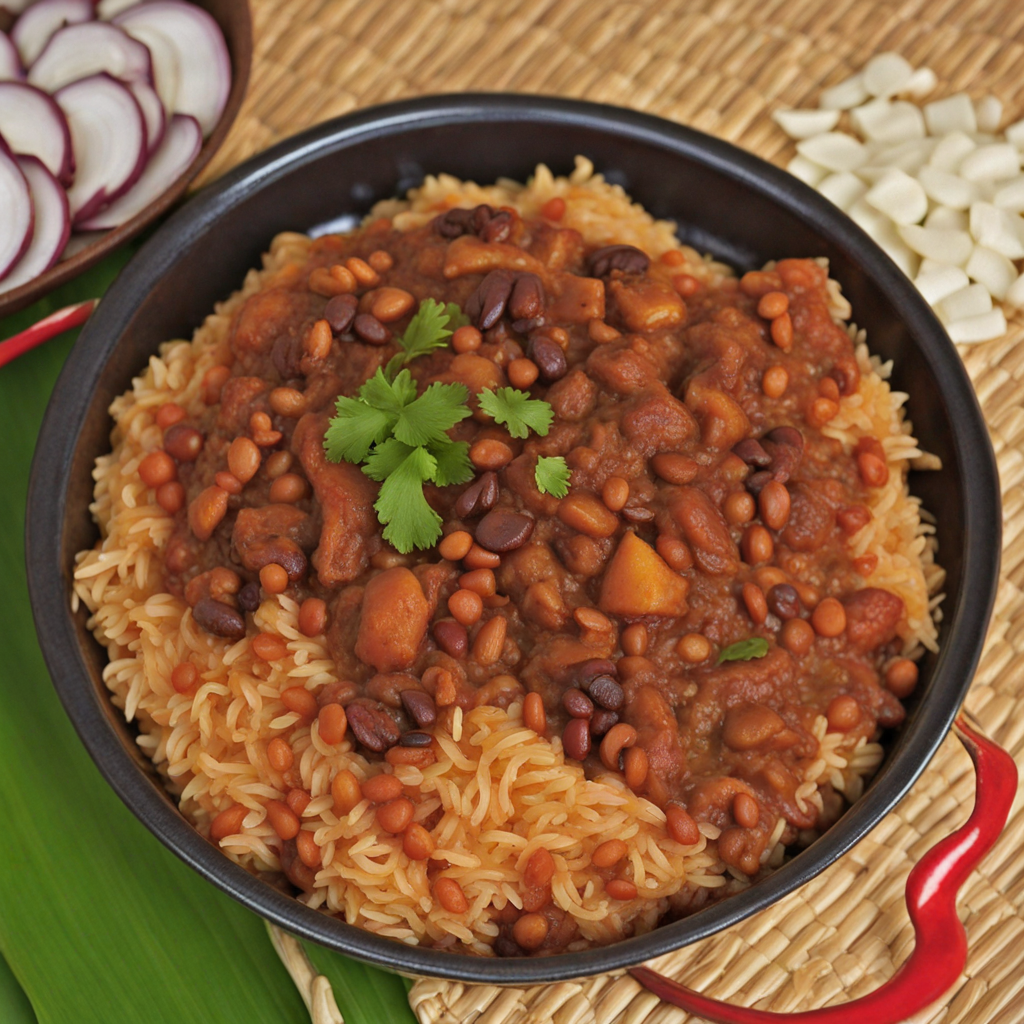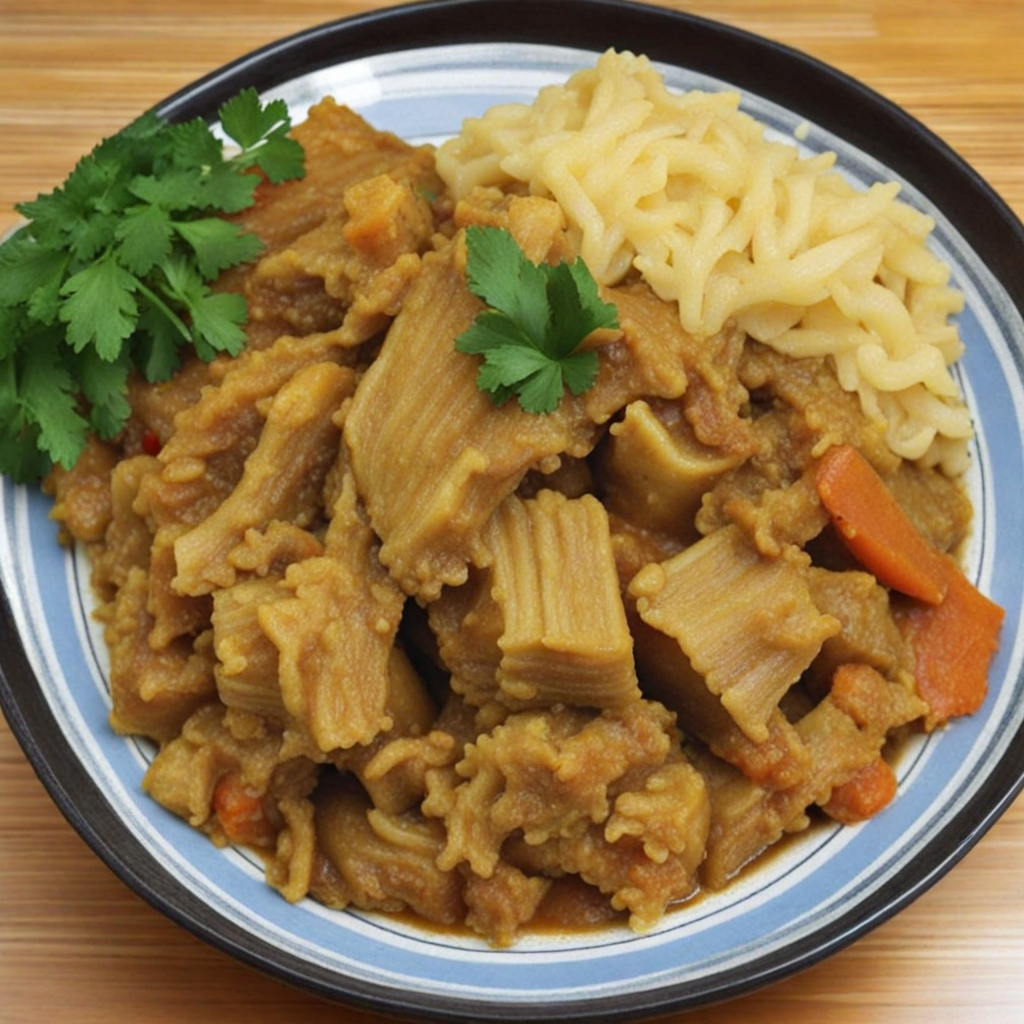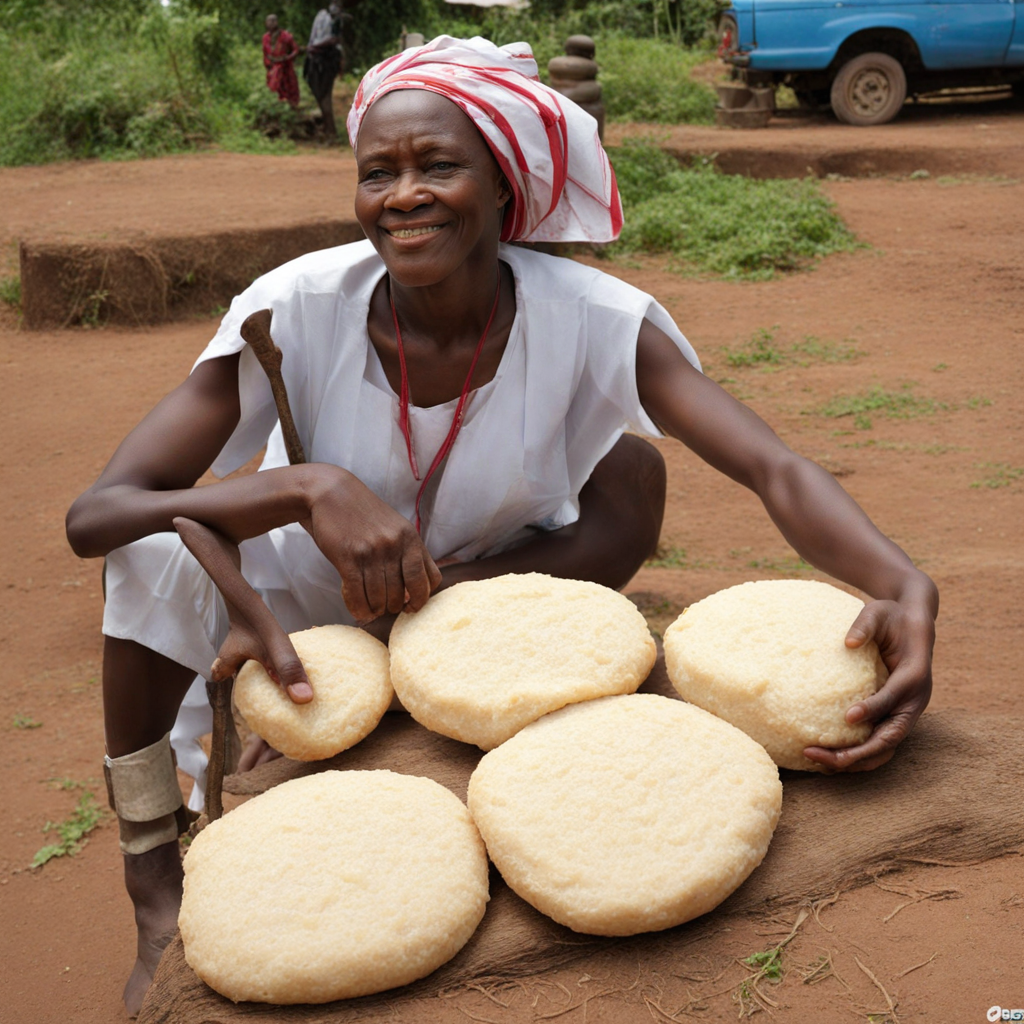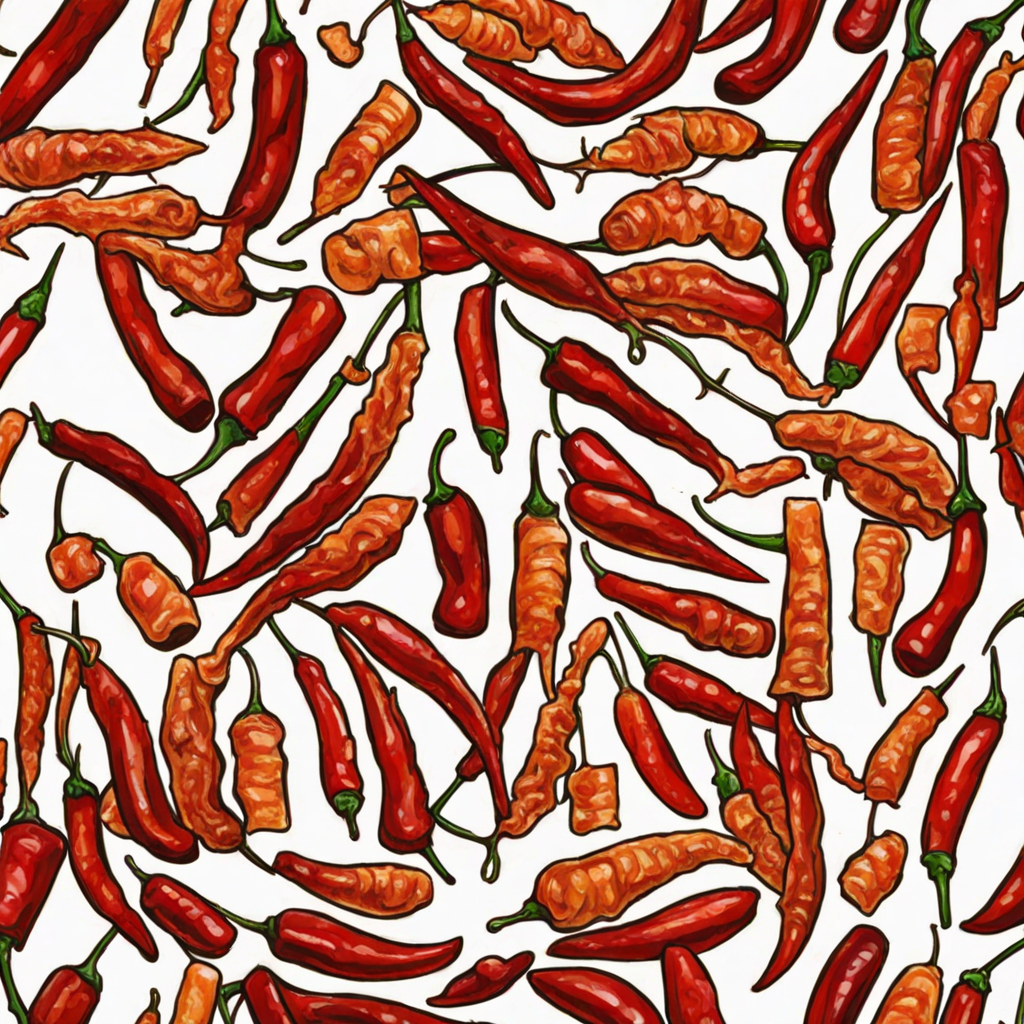Bouillon
Bouillon is a traditional Congolese dish that embodies the rich and diverse culinary heritage of the Congo. This flavorful broth is typically made by simmering a variety of meats, often including beef, chicken, or fish, along with an array of vegetables such as carrots, potatoes, and greens. The slow cooking process allows the ingredients to meld together, creating a comforting and aromatic soup that is both nourishing and satisfying. The use of local spices and herbs enhances the depth of flavor, making each bowl a unique experience that reflects the region's rich agricultural bounty. At its core, Bouillon is not just a meal; it's a communal experience. Traditionally served in large bowls, it invites family and friends to gather around and share in its warmth. The broth is usually accompanied by sides like fufu, a starchy staple made from cassava or plantains, which can be dipped into the soup or eaten alongside. This pairing not only complements the dish but also adds a delightful texture contrast, making every bite a celebration of Congolese culture. For those eager to explore new tastes, Bouillon offers a perfect introduction to the flavors of Central Africa. The combination of savory meats, fresh vegetables, and aromatic spices creates a dish that is both hearty and refreshing. Each spoonful tells a story of tradition and community, inviting you to discover the essence of Congolese cuisine. Whether enjoyed at a local eatery or made at home, Bouillon is a culinary journey that promises to tantalize your taste buds and warm your heart.
How It Became This Dish
The History of Bouillon in Congo: A Culinary Journey #### Origins Bouillon, a traditional dish in Central Africa, particularly in the Democratic Republic of the Congo (DRC), is more than just a meal; it embodies the rich tapestry of Congolese culture and history. The term 'bouillon' itself derives from the French word for 'broth,' reflecting the French colonial influence in the region. The dish typically consists of a flavorful broth often enriched with vegetables, meat, or fish, making it a versatile base for various meals. Historically, bouillon has its roots in the indigenous culinary practices of the Congo River basin. The Bantu peoples, who migrated to the region thousands of years ago, were adept at using local ingredients to create nourishing dishes. They utilized a variety of plants, tubers, and proteins sourced from the environment, forming the foundation of many Congolese meals. The use of simmered broths may have evolved as a practical method to extract flavors from available ingredients while maximizing nutrition—a necessity in a region that has faced periods of food scarcity. #### Cultural Significance In Congolese culture, food is not merely sustenance; it is a vital part of social interaction and community bonding. Bouillon holds a special place in this culinary landscape. It is often served during communal gatherings, family celebrations, and religious ceremonies, symbolizing unity and hospitality. The act of sharing a bowl of bouillon is seen as a way to foster relationships and reflect the values of kinship and togetherness. Additionally, bouillon is a dish that transcends social classes. Whether prepared in a humble home or a grand feast, it remains a staple. This adaptability highlights its importance in Congolese society, where it embodies both tradition and innovation. The ability to improvise with local ingredients means that bouillon can vary widely from one region to another, influenced by local agriculture and cultural preferences. #### Development Over Time As the DRC underwent significant social and political changes throughout the 20th century, so too did its culinary practices. The colonial era introduced new ingredients and cooking techniques, which melded with traditional methods. French influences are evident in the preparation of bouillon, where techniques like sautéing and the use of herbs and spices were incorporated into the dish. This fusion of culinary traditions enriched the local food culture while also reflecting the complexity of colonial relationships. In the post-colonial period, the DRC faced numerous challenges, including political instability and economic hardship. These factors impacted food availability and preparation practices. Bouillon, with its flexible recipe that allowed for the use of whatever was at hand, became a symbol of resilience. Families learned to adapt, using available resources to create nourishing meals, often relying on local farmers and markets. The dish evolved to include ingredients such as cassava leaves, peanuts, and various meats, depending on what communities had access to. Today, bouillon remains a popular dish in the DRC and among Congolese diaspora communities worldwide. It is often featured in restaurants that celebrate Congolese cuisine, allowing those who have left their homeland to reconnect with their culinary heritage. Additionally, bouillon is increasingly recognized in global culinary circles, celebrated for its depth of flavor and nutritional value. #### Bouillon Variations The beauty of bouillon lies in its versatility. While the base is typically a broth, the ingredients can vary significantly based on regional and familial preferences. For example, in urban areas, bouillon might be prepared with chicken or beef, enriched with carrots, onions, and spices. In contrast, rural preparations often incorporate fish—particularly tilapia, a common catch in the Congo River—and an array of local vegetables, such as okra and eggplant. In some regions, bouillon is served with a side of fufu (a starchy side dish made from cassava, yam, or plantains), while in others, it might accompany rice or plantains. The adaptability of bouillon allows it to remain relevant in various contexts, from everyday meals to festive occasions. #### Modern Influence and Globalization As globalization continues to shape food culture, bouillon has also been subject to reinterpretation. Chefs in the DRC and abroad experiment with traditional recipes, introducing new ingredients and techniques that appeal to modern palates. This evolution reflects a broader trend in which traditional dishes are reimagined for contemporary dining experiences, allowing bouillon to maintain its relevance in a rapidly changing world. Moreover, the rise of social media and food blogs has facilitated the sharing of Congolese culinary traditions globally. Recipes for bouillon are now circulated online, inviting food enthusiasts to engage with and appreciate this rich aspect of Congolese culture. This exposure not only promotes culinary diversity but also fosters a greater understanding of the DRC's history and culture through its food. #### Conclusion Bouillon is more than a simple dish; it is a narrative woven into the fabric of Congolese identity. From its indigenous roots to its colonial adaptations and modern reinventions, bouillon reflects the resilience, creativity, and communal spirit of the Congolese people. It is a testament to how food can transcend time and place, serving as a bridge between the past and present. As we continue to explore and celebrate global cuisines, bouillon stands as a delicious reminder of the power of food to tell stories, nurture communities, and preserve cultural heritage.
You may like
Discover local flavors from Congo


